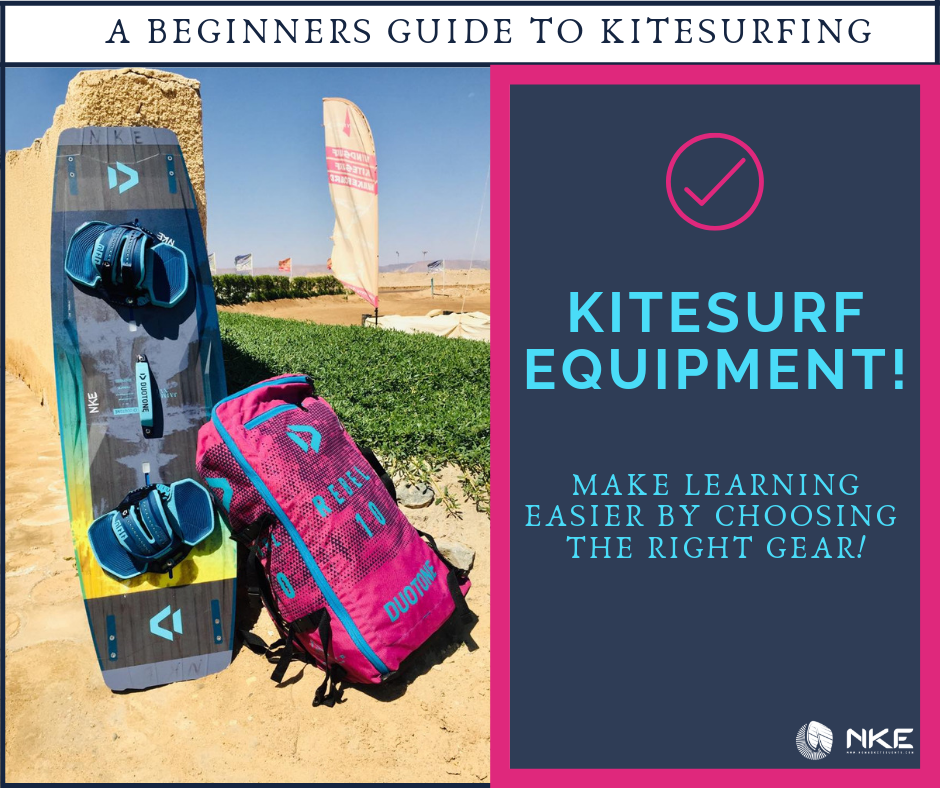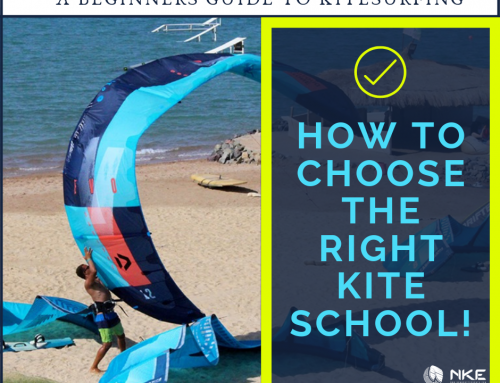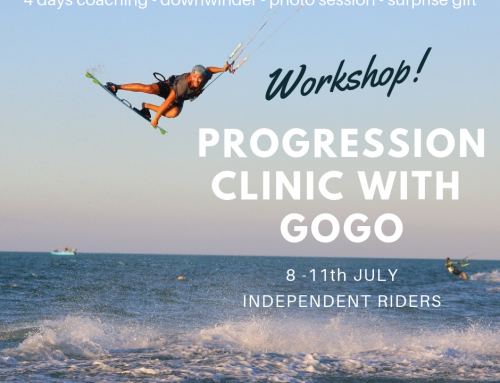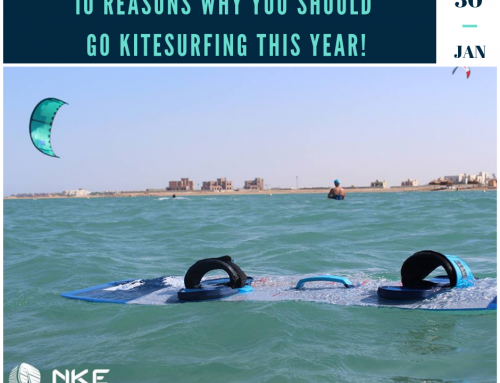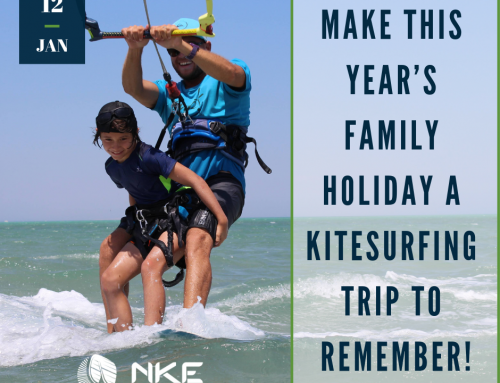It is essential to make sure you have the right kitesurfing equipment set up when you start out. Having access to high quality, well-maintained equipment will make learning easier and much more enjoyable!
Imagine pausing in the middle of your lesson because of a leaking kite. You’ll waste valuable lesson time waiting for the instructor to pack the faulty kite down and set up another. It is the last thing you want to have to do. Even worse is being fearful that the kite may rip due to it being clearly visible that the material is suffering from a lack of maintenance and overuse.
It is likely that when you first learn to kitesurf, you will use the kites from the school you choose to learn with but how do you know if the school you have chosen has the right kitesurfing equipment to get you off to a great start?
Let us help you out with our quick Equipment Guide!
Kitesurfing Equipment – Everything You Will Need
There are a few standard basic pieces of equipment every beginner kitesurfer needs:
The Kite
Make sure there is no visible damage to the kite. You should also learn how to check for leaks when setting up your equipment for the first time.
The Bar
Check that there are no cuts or frays in the lines. Both 4 & 5 lines are okay for learning however starting out with 5 lines is a good idea because it helps beginners to understand how to use the fifth line for skills such as relaunching.
A Seat Harness
We recommend a seat harness (instead of a waist harness) when you are first learning to kite. We know it doesn’t look the coolest, but it certainly does the job!
Why?
Sometimes beginners can struggle with a waist harness due to the possibility of it moving upwards. Such shifts in position can affect your balance because of the pulling point. Seat harnesses are also a much better option if you suffer from any back problems or require extra support.
Safety Leash
Is a must no kitesurfer should enter the water without one!
A Big Kitesurfing Board aka A Door Board
Once you’ve mastered controlling the kite, you’ll move onto the water start skills. This is when you’ll experience your first tries with the board. A larger board is generally much easier for beginner riders. It’s increased buoyancy and size makes it easier to balance in the early stages of learning. Once you’ve perfected your technique and head on to learning new skills you may wish to switch.
There are also a few optional extras that you’ll probably want to consider. Check with your Kite school if these will be provided otherwise, we recommend that you bring your own!
A Helmet
To prevent head injuries.
Water Shoes
We highly recommend having water shoes. A cut in the foot can ruin the whole experience; better safe than sorry!
Wetsuit
Depending on the water temperature you may wish to consider wearing a wet suit. It’s also a great idea for protecting you during skill practice.
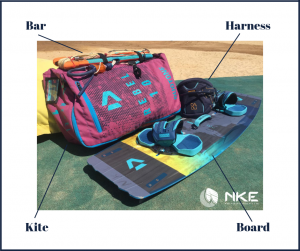
Things You Should Check With Your Centre
Once you have chosen your kite school (or during the process of selecting a school) you’ll want to a few details about their equipment.
Firstly, What Type of Equipment Are They Using?
The kite industry is fast-paced and each year the top kite brands are bringing out newer and improved kitesurfing equipment. It certainly isn’t necessary to have the latest models, but it does help to make sure the kites your centre is using are fit for purpose.
There are several established brands to choose from including Duotone, Core, Cabrinha & F-one for example! At Nomad Kite Events our favourite brand is Duotone (the old North Kiteboarding), due to their high reputation in comfort, safety and performance.
Secondly, How Regularly Does The School Maintain and Update Their Kitesurfing Equipment?
Just think, some kite schools have hundreds of students coming through the doors every month. As you can imagine the equipment is getting used a lot! Regular maintenance and replacement of equipment are essential to making sure that it is safe to use – both for students and independent riders who are renting kitesurfing equipment from the school.
Be sure to ask any perspective kite school how they ensure the safety of their equipment and make sure it is maintained in good condition. You may also ask how often they purchase new equipment for the school?
Remember…
It is also your responsibility to check the condition of the equipment before you use it!
Make sure your kite, lines and safety system are all in working condition before going to the water. A leaking kite will usually be easy to spot. Check the firmness of the kite when you’ve finished pumping it and again before you get ready to launch the kite. A leaking kite will lose air when left on the beach so you’ll be looking to make sure the kite is as firm as it was when it was first pumped.
If you choose to kite with us, you will learn how to access all of this in your first few lessons.
At the end of each session, leave the equipment how you’d like to find it next time!
To keep equipment in good condition it’s important that as a student you rinse and pack down the rental equipment correctly. It can be hard for a school with a lot of students to make sure that equipment gets treated as it should. Help your kite school keep the equipment in top condition for all of their students by doing your bit too!
Thirdly, Do They Have Plenty of Equipment in Each Size?
You may find that some kite centres have a very limited amount of school kites. We’ve heard of occasions when a student has paid for a lesson, turned up ready to learn with enthusiasm only to be provided with inappropriate equipment. A harness that is too tight or too big and a kite that is the wrong size for their weight or the wind conditions.
Of course, when you are starting out you won’t necessarily know which size kite you’ll need; since it can also vary with the wind conditions on any given day. Confirming your centre has multiple amounts of each item will help you to ensure that the right equipment will always be available when you need it. After all, you want to make sure you are comfortable and set up for learning success!
When using the equipment from a kite centre it is possible that you may not be met with a wide range of choice over the board you receive. If you are however given a choice, as we mentioned above, a good rule of thumb for the beginner rider, the bigger the board the better!
(If you have some previous water sports experience, then you may get away with a smaller board but it’s all in the skill level!)
The Long and Short of It…
When you are on the hunt for a centre to take your very first kiteboarding lesson, don’t be afraid to ask questions about the equipment! Kiteboarding isn’t the cheapest sport to take up, and you want to make sure you are going to get what you’re paying for! The staff at a good kite school will be able to tell you why they have chosen the equipment and the benefit it will have in helping you learn to ride.
The truth is if it’s a reputable kitesurfing school, equipped for beginner riders and hiring knowledgeable instructors, they will not hesitate to answer your questions. Your instructor should be able to talk you through the equipment with ease.
Looking for a kitesurfing school? Make sure you read the first post in our Beginners Guide to Kitesurfing – How to Choose The Right Kitesurfing School to help you decide!
Or click here to find out more about kitesurfing with us here in El Gouna or to book your kitesurfing holiday simply get in touch!

